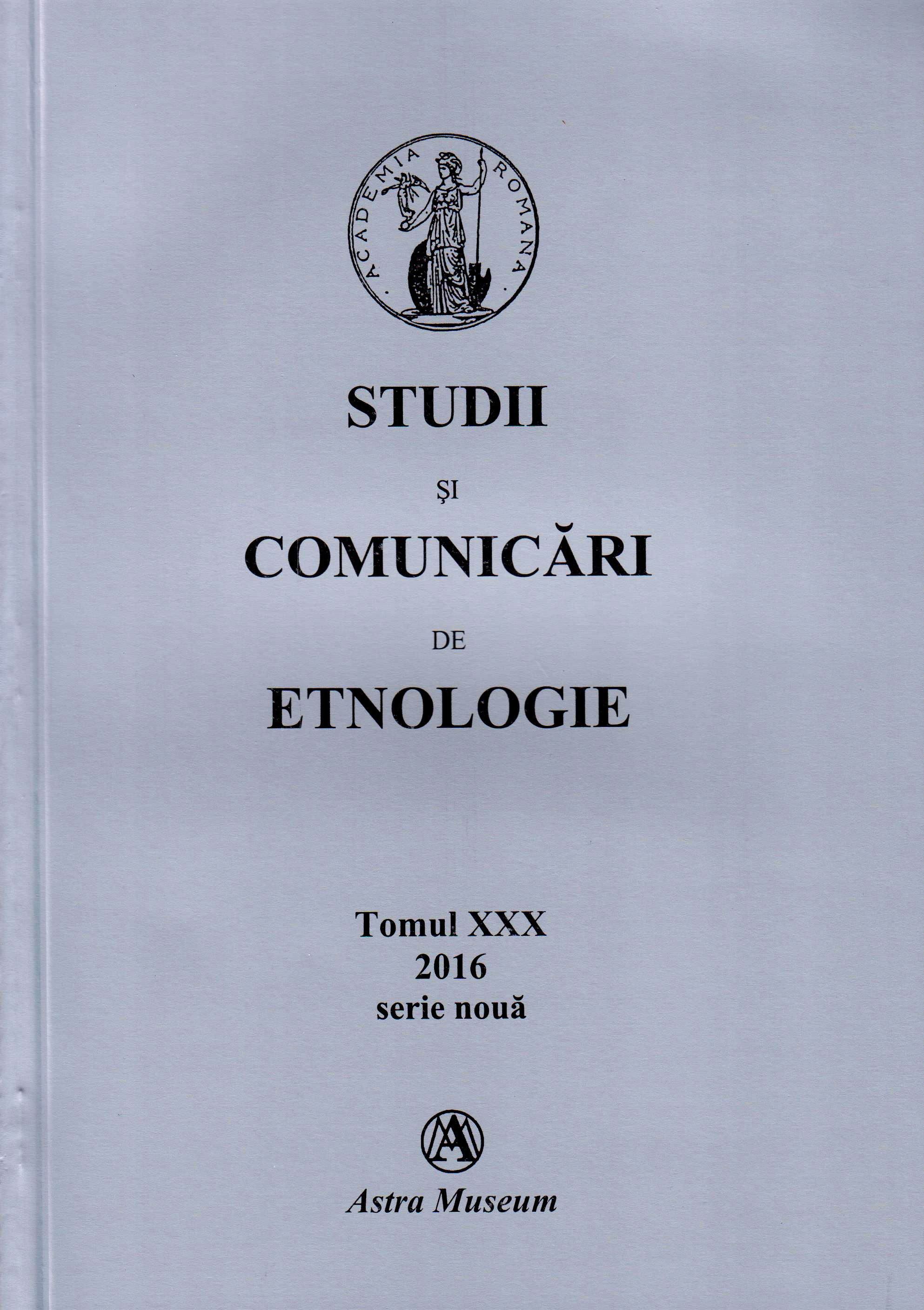Troițe de lemn din Zarand, Podișul Luncanilor și Valea Jiului
The wooden crosses from Zarand, Podișul Luncanilor și Valea Jiului (Romania)
Author(s): Mircea LacSubject(s): Christian Theology and Religion, Cultural history, Visual Arts, Local History / Microhistory
Published by: ASTRA Museum
Keywords: cross; tradition; Christian Church; ornament; solar symbols.
Summary/Abstract: In the olden times, the boundaries of the villages were marked by the inhabitants with wooden crosses, which had their surface engraved with the mysterious ancestral insignia that determined the good local order. The majority of these vanished long ago, their wood „elting” in the great crucible of nature. The wooden crosses that were left, like the one from the boundary of the Dupăpiatra village, were made out of massive pieces of oak wood with archaic shapes that looked as if they had just risen from the mythological Cosmic Tree, which was thought to be linking the two lands, the land of the living and the land of the dead. Others, such as the one from Blăjeni, astonishes through the multitude of decorative patterns composed of the geometrical shapes of the triangle and of the richness of the solar rosettes, which seem to be a deification to the celestial body of the day. Close to the commune of Vața de Jos, there are the crosses of the heroes that have hidden within their construction and ornamentation, beliefs that faded in the long run. As an example it can be given the cross placed in the front of the church of Ciungani, which has multiple significations. On the extremities of the cross there is a rosette deeply carved in the shape of a „vortex”, which is a symbol of eternal movement. On top of the cross there is a nailed bird whose meaning is connected with the system of folkloric beliefs regarding the journey of the soul of the deceased to another plan of existence. The ancestral custom of putting crosses on the outside walls of the church, in the loving memory of the ones who died on remote lands, brought an element of reparation in the imbalance produced by the demise of a person on foreign regions. Moreover, this would reinstate him in the family and nation’s good order. This custom links the family’s history to its ancestors and it is a part of that „paradoxical unity” of the people, as Mircea Eliade calls it. In the villages on the Luncanilor Platform, the familly’s cementary is kept on the household’s fields. The tombs with two or three crosses near the houses between the garden’s trees marvel the viewer. According to the inhabitants, the dead in the garden completed the unity and permanence of the household that are the beating heart of the house. The ancestors were laid in their family and nation’s ground. This custom lets us catch sight of the elements of the old cosmogony, which is part of a whole world of rituals, miths and symbols. It reflected the dialectics of life and death, the primary undifferentiation from where everything begins and where everything is going to return in order to regenerate. Jiu Valley amazes through the boundary crosses of the „momârlani”, who are the ancestral inhabitants of the Jiu’s sources. These crosses are built of a queer combination of wood and stone and remind of the mysterious „gomile”, which are the stone pillars that rose on the rocky summits of The Carpathians. They are the evidence of some ancestral beliefs, due to their raised arms in their upper side that give them Christian significations. This is another thing that points out the fact that these had at their origins a sacred utility. The rising interest in the crosses of the county of Hunedoara proves us once again that the Christian Law of the way of the Romanian rural life revolves around the sign of the cross. The cross is considered to be a beneficial, solid, balanced, protective and a giver of life symbol. Its beauty derives from the fact that it is the essence itself of balance and harmony. To sum up, the cross is a sign with inexhaustible resources.
Journal: STUDII ŞI COMUNICĂRI DE ETNOLOGIE
- Issue Year: XXX/2016
- Issue No: 30
- Page Range: 165-175
- Page Count: 11
- Language: Romanian
- Content File-PDF

